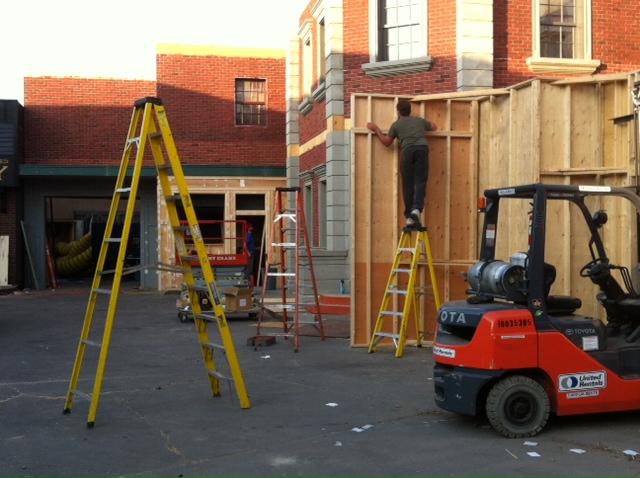Looking back at the shows I've done and the poor choices I've made about PPE over my life, I'd have to say that getting a 3" (75mm) long wood splinter jammed into my hand had to be one of the most painful experiences I've encountered. The wood shard entered the mid-palm of my hand and traveled under the skin up into my wrist. Ouch! doesn't begin to describe it.
It happened one day when I was unloading some plywood sheathing from a van. I had to go to the emergency room, miss the show, and then be interrogated by my employer about the unexpected medical bill he received. Luckily, the plywood was mostly new and had not been too abused, so it was mostly one big clean skewer that broke-off in my body. Had the plywood been covered with paint, old and softened due to regular abuse, it might have shattered into many dirty and chemically contaminated splinters. Lucky me.
A special web site has been set-up by EHS Today magazine and one of their advertisers. The site has numerous articles and downloads, and will be growing it's content, so check-back in regularly.
Just remember to remove your gloves when working with rotary power tools like planners, lathes, drills, saws, grinders, and sanders - should your glove fabric get snagged in the tool, it can draw your hand or body into the device as it gets entangled.
An often overlooked consideration about gloves in scene shops is the sanitary aspect of shared tools. DON'T SHARE YOUR GLOVES. They are sweaty, grimy, fabrics that harbor germs and skin diseases. Mark your gloves with your name so they are easily identifiable. Change your gloves frequently.
It happened one day when I was unloading some plywood sheathing from a van. I had to go to the emergency room, miss the show, and then be interrogated by my employer about the unexpected medical bill he received. Luckily, the plywood was mostly new and had not been too abused, so it was mostly one big clean skewer that broke-off in my body. Had the plywood been covered with paint, old and softened due to regular abuse, it might have shattered into many dirty and chemically contaminated splinters. Lucky me.
A special web site has been set-up by EHS Today magazine and one of their advertisers. The site has numerous articles and downloads, and will be growing it's content, so check-back in regularly.
The theatre work environment is a very hazardous place, and we continually put our hands at risk:
- Stage rigging has heavy counterweights to handle, ropes to pull, and wire rope ends that may not be properly seized.
- Stage Lighting Instruments can be very hot and burn you.
- Moving platforms and wood can expose you to splinters.
- Metal parts can have sharp edges.
- Dry Ice used for atmospheric effects can super-cool your skin and kill it (ice burns).
- Shop chemicals can burn the skin or accelerate the development of skin diseases / cancers.
- Even non-hazardous grime can be a real problem to clean-off, so stains can last for weeks.
.JPG) |
| Who knows what might be behind that platform frame when you reach around it to lift it . . . Nail points? Splinters? Spiders? |
An often overlooked consideration about gloves in scene shops is the sanitary aspect of shared tools. DON'T SHARE YOUR GLOVES. They are sweaty, grimy, fabrics that harbor germs and skin diseases. Mark your gloves with your name so they are easily identifiable. Change your gloves frequently.













